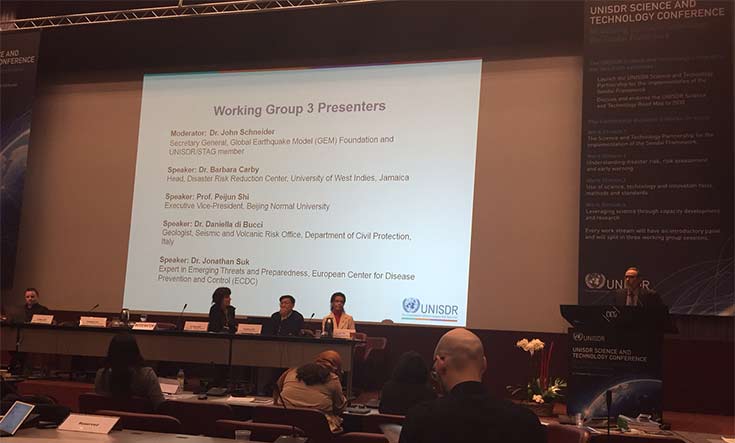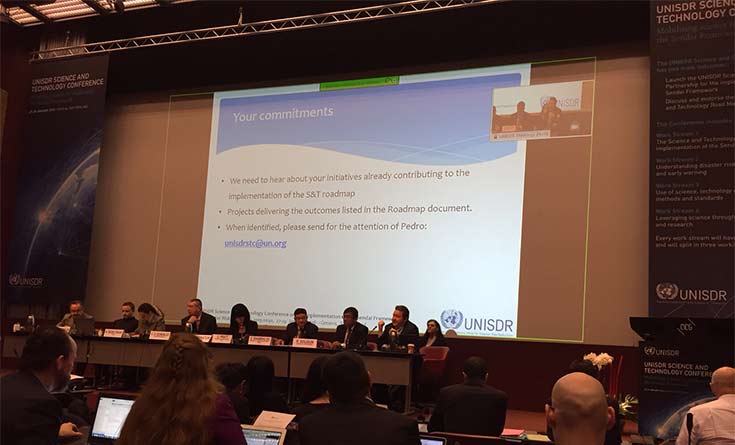UNISDR Science and Technology Conference underway
Crisis Response Journal – represented by Editorial Advisory Panel Member Lina Kolesnikova – is taking part in the UNISDR Science and Technology conference in Geneva as a working group member. The conference topic is ‘Mobilising science to implement the four priorities of the Sendai Framework’.

Working group: 3 Multi-hazard risk assessment and management
The conference aims to bring together the full diversity of the science and technology community, policymakers, practitioners and researchers from all geographical regions, at local, national, regional and international levels to discuss how the science and technology community will best support the implementation of the Sendai Framework for Disaster Risk Reduction 2015-2030.
The UNISDR Science and Technology Conference on the implementation of the Sendai Framework for Disaster Risk Reduction 2015-2030 will promote and support the availability and application of science and technology to decision-making in DRR.
The conference will launch the UNISDR Science and Technology Partnership for the implementation of the Sendai Framework and discuss and endorse the UNISDR Science and Technology (S&T) road map.
The Sendai Framework promotes shifting focus from managing disasters to managing risks. This requires a better understanding of risk in all its dimensions of vulnerability, exposure and hazards. It aims to ensure that the multi-hazard management of disaster risk is factored into development at all levels as well as within and across all sectors. The Sendai Framework is wide in scope and applies to the risk of small-scale and large-scale, frequent and infrequent, sudden and slow-onset disasters, caused by natural or man-made hazards as well as related environmental, technological and biological hazards and risks.
A representative from USAID shares her organisation’s experience during the conference
The Framework recognises the importance of science and technology for disaster risk reduction, particularly in its paragraph 25g as follows: "Enhance the scientific and technical work on disaster risk reduction and its mobilisation through the coordination of existing networks and scientific research institutions at all levels and all regions with the support of the UNISDR Scientific and Technical Advisory Group in order to: strengthen the evidence-base in support of the implementation of this framework; promote scientific research of disaster risk patterns, causes and effects; disseminate risk information with the best use of geospatial information technology; provide guidance on methodologies and standards for risk assessments, disaster risk modelling and the use of data; identify research and technology gaps and set recommendations for research priority areas in disaster risk reduction; promote and support the availability and application of science and technology to decision-making; contribute to the update of the 2009 UNISDR Terminology on Disaster Risk Reduction; use post-disaster reviews as opportunities to enhance learning and public policy; and disseminate studies."

Day 2: Understanding disaster risk, risk assessment and early warning
Click here for free download of CRJ’s article on Science and Technology in disaster response, by Dr Amina Aitsi-Selmi, Kevin Blanchard and Professor Virginia Murray (published June 2015)